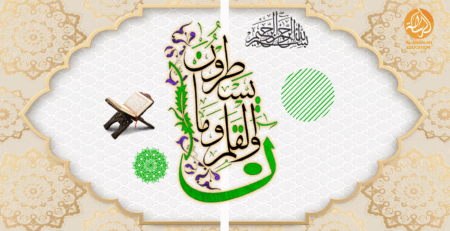Calligraphy Inscription in Islamic Architecture and Art
Islamic architecture is renowned for its intricate designs, geometric patterns, and elegant calligraphic inscriptions. Among these elements, calligraphy holds a special place, serving not only as a decorative feature but also as a means of conveying spiritual and philosophical messages. In this paper, we will delve into the history and use of calligraphy in Islamic architecture, with a specific focus on its role during the Timurid period and its contemporary development.
Historical Background
The art of calligraphy has deep roots in Islamic culture, dating back to the time of Prophet Muhammad, who emphasized the importance of beautiful handwriting. Over the centuries, calligraphy evolved into a distinct art form, with various scripts and styles being developed to adorn religious texts and architectural structures. During the Timurid era, which spanned from the 14th to the 16th century, Islamic art experienced a golden age characterized by flourishing artistic endeavors. Timurid rulers, such as Timur and his descendants, were passionate patrons of the arts, commissioning the construction of grand mosques, madrasas, and mausoleums adorned with exquisite calligraphic inscriptions.
Utilization of Calligraphy in Timurid Architecture
In Timurid architecture, calligraphy served both a practical and symbolic purpose. Inscriptions of Quranic verses, Hadiths, and praises of rulers were meticulously crafted onto the walls, domes, and mihrabs of mosques and other religious structures. These inscriptions not only beautified the buildings but also served as a reminder of the divine presence, creating a sacred atmosphere conducive to prayer and contemplation. Master calligraphers, such as Mir Ali Tabrizi and Sultan Ali Mashhadi, were revered for their skill and expertise, and their works continue to inspire awe to this day.
Aesthetic Principles and Techniques
Timurid calligraphy was characterized by its harmonious integration with architectural elements. Calligraphers carefully considered the size, style, and placement of inscriptions to ensure they complemented the overall design of the structure. Various scripts, including Naskh, Thuluth, and Kufic, were employed, each with its own distinct characteristics and aesthetic appeal. Additionally, calligraphers utilized techniques such as proportional scaling, geometric alignment, and ornamental flourishes to create visually stunning compositions that captivated the viewer’s eye.
Enduring Legacy and Contemporary Development
The legacy of Timurid calligraphy continues to exert a profound influence on contemporary Islamic art and architecture. Despite the passage of centuries, the principles and techniques developed during this period remain relevant today, inspiring artists and architects to explore new avenues of expression while staying true to tradition. In recent years, there has been a resurgence of interest in reviving the art of calligraphy in Islamic architecture, with modern practitioners drawing upon ancient manuscripts and archival sources to create innovative and compelling designs that reflect the cultural heritage and identity of the Muslim world.
Conclusion
In conclusion, calligraphy stands as a quintessential feature of Islamic architecture, embodying the spiritual, cultural, and artistic dimensions of Muslim civilization. The Timurid period represents a pinnacle of artistic achievement, with calligraphy playing a central role in the embellishment of architectural masterpieces. Through its meticulous craftsmanship and profound symbolism, Timurid calligraphy continues to inspire awe and admiration, serving as a timeless testament to the enduring beauty and significance of Islamic art.
FAQs
- What role did calligraphy play in Islamic architecture? Calligraphy served both a decorative and symbolic purpose in Islamic architecture, with inscriptions of Quranic verses and religious texts adorning mosques and other structures.
- Who were some notable calligraphers during the Timurid period? Master calligraphers such as Mir Ali Tabrizi, Sultan Ali Mashhadi, and Abd al-Rahman Jami were renowned for their skill and expertise in Timurid calligraphy.
- How has Timurid calligraphy influenced contemporary Islamic art? The principles and techniques of Timurid calligraphy continue to inform contemporary Islamic art and architecture, inspiring artists and architects to create innovative designs that reflect both tradition and modernity.
- What are some modern applications of calligraphy in architecture? In modern Islamic architecture, calligraphy is often used to adorn mosques, cultural centers, and public spaces, serving as a visual representation of Islamic identity and heritage.
- Why is calligraphy considered a sacred art form in Islam? Calligraphy is revered in Islam for its role in preserving and disseminating the word of God. It is considered a sacred art form that embodies the beauty and power of divine revelation.











Leave a Reply